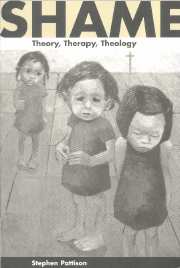Book contents
- Frontmatter
- Contents
- Preface
- Introduction
- PART I APPROACHING SHAME
- PART II ENCOUNTERING SHAME
- PART III SHAME AND CHRISTIANITY
- Introduction: bringing Christianity into the picture
- 8 Modern Christian responses to shame
- 9 Shame in Christianity
- 10 Towards more adequate approaches to shame
- Epilogue
- Bibliography
- Index
Introduction: bringing Christianity into the picture
Published online by Cambridge University Press: 05 June 2012
- Frontmatter
- Contents
- Preface
- Introduction
- PART I APPROACHING SHAME
- PART II ENCOUNTERING SHAME
- PART III SHAME AND CHRISTIANITY
- Introduction: bringing Christianity into the picture
- 8 Modern Christian responses to shame
- 9 Shame in Christianity
- 10 Towards more adequate approaches to shame
- Epilogue
- Bibliography
- Index
Summary
At the beginning of this volume, I outlined a method for a practical theological approach to shame. I suggested there that working towards a practical theology of shame requires a critical conversation between what is known of the condition described as shame and religious beliefs and practices.
The first two Parts of this book were devoted metaphorically to ‘listening’ to contemporary understandings of shame drawn from non-theological, non-religious disciplines and practices. This was not an easy task, because there is an enormous variety of perspectives upon the nature of what are called emotions in general and upon shame in particular. In the first Part of this book, therefore, some of the problems involved in trying to understand and define shame as a phenomenon from a multi-disciplinary perspective were considered.
This was followed in the second Part by a consideration of the experience of shame, particularly the kind of chronic or habitual shame reaction that appears to diminish and blight the lives of individuals or groups. On the face of it, it appears to be the case that chronic shame represents a significant negative condition in our society. It is a condition of polluting, defiling unwantedness that alienates people and groups from themselves and from society. Dealing with chronic shame by means of strategies for social and individual integration is complex. There are no easy solutions, not least because we do not have a complete, coherent understanding of the underlying factors and implications inherent in shame. It remains a condition that is somewhat hidden, obscure, ill-defined and poorly understood, despite the efforts of many different theorists, researchers and clinicians.
- Type
- Chapter
- Information
- ShameTheory, Therapy, Theology, pp. 186 - 188Publisher: Cambridge University PressPrint publication year: 2000



